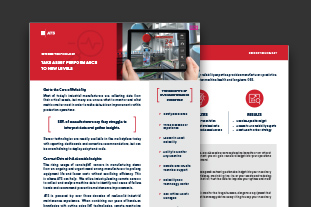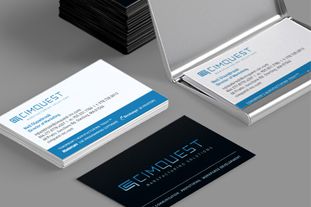Many manufacturing businesses are told, “You need branding.” So they set out and hire a graphic designer to create a logo with a matching website and business cards. That is a great start for sure, but branding is a word with many interpretations. Let’s break this down to have a clear understanding of its many layers to ensure you aren’t missing crucial opportunities for your business.
Break down the branding layers with the help of an industrial branding agency
Logo: is the visual image that customers associate your business with.
Slogan/tagline: is the short catchy phrase that helps customers remember who you are, and in some cases, what you do.
Brand: is what customers perceive your business to be and their overall impression.
Let’s talk about this…
How do your customers perceive your manufacturing business…
What do you want your customers to think when they think of you?
What do you want them to say to others when referencing your business?
What do you want them to feel when they interact with your business?
A Manufacturing Branding Agency can help create narratives for branding discussions when it comes to your business
There are some basics to break down this formula to get started:
Purpose: Position your business, product or service to the correct target audience. Understanding who they are: age, gender, location, income level, etc.
Consistent/cohesive messaging: Create standards including a style guide that includes type of imagery, tone of message, color scheme, etc. based on who your target audience is and what appeals to them. Use a distinctive voice with descriptive words on how you want your story told.
USP (unique selling position): What are the benefits to your business, product or service? What problem do they solve for the customer? Highlight the features that make it unique and what adds value for the customer.
Emotion: As humans, our natural instinct is to make decisions based on how we feel. It takes purpose and focus not to do this. Most consumers make their purchase decision based on emotion (impulse buying). How they feel when they interact with your brand will have everything to do with their decision-making process.
Loyalty: Consumer loyalty has decreased over the years, but customers will stay loyal, and pay a premium, if they feel they receive value for their investment. Understand that value doesn’t always mean the lowest price. Specifically, if they are treated well and you deliver what you promise, the majority will consider returning. What are you doing or can you do to highlight the experience between you and your customers?
Competitive awareness: Be aware of your competition, who they are and what they have done. Not only success, but where they have failed? Utilize their experience to help you position your business.
Let’s discuss a few recognizable well-executed national branding examples.
Over 30 years ago, Starbucks changed the coffee culture completely. They convinced consumers that coffee should taste good, that we need it often and it demands a premium price. They welcomed anyone who wanted to come in and sit in their chair, whether they made a purchase or not. Other major brands, such as McDonalds, had to pivot and revamp their entire strategy and approach to compete or they were at risk to lose their market share of breakfast customers.
Toms, the shoe brand, opened in 2006 and marketed themselves with embedded giving. For every pair of shoes you purchased, they donated a pair to those in need. Consumers immediately flocked to this concept, because they could feel good about their purchase and feel like they were making a difference in the world. Staying flexible and adjusting to the needs of their consumers, Toms restructured their giving concept and now dedicates 1/3 of their profits to the grassroots good, allowing them to make a bigger impact in more focused areas.
IKEA sells furniture. However, they have taught us that we can need furniture and at the same time make a difference in the world. We can make the decision to purchase from any furniture store; yet IKEA puts forth their focus beyond the transaction itself. They have created a relationship with consumers regarding their life experiences living in their furniture. Their materials help with sustainability, whether it is using bamboo, recycled or renewable plastic, sustainable wool or cotton, their dedication goes beyond the furniture purchase itself. Their efforts help fight climate control, sustainability and social impact, which has proven to be important to today’s consumers.
An experienced branding agency will know how to help you work through creating these specific areas for your business, and design an overall brand experience for your customers.
When considering a branding agency, consider one that specializes in manufacturing and industrial clients, such as Aviate Creative.
About Aviate Creative:
Aviate Creative are the experts in manufacturing branding. As an industrial branding agency, President Paul Kiesche and his team apply their decades of experience to help clients create award-winning brands. Check out some samples of manufacturing branding at: https://aviatecreative.com/portfolio/manufacturing/
For a free evaluation on your manufacturing branding strategy, or for more information, contact Aviate Creative at (908) 509-4442.




